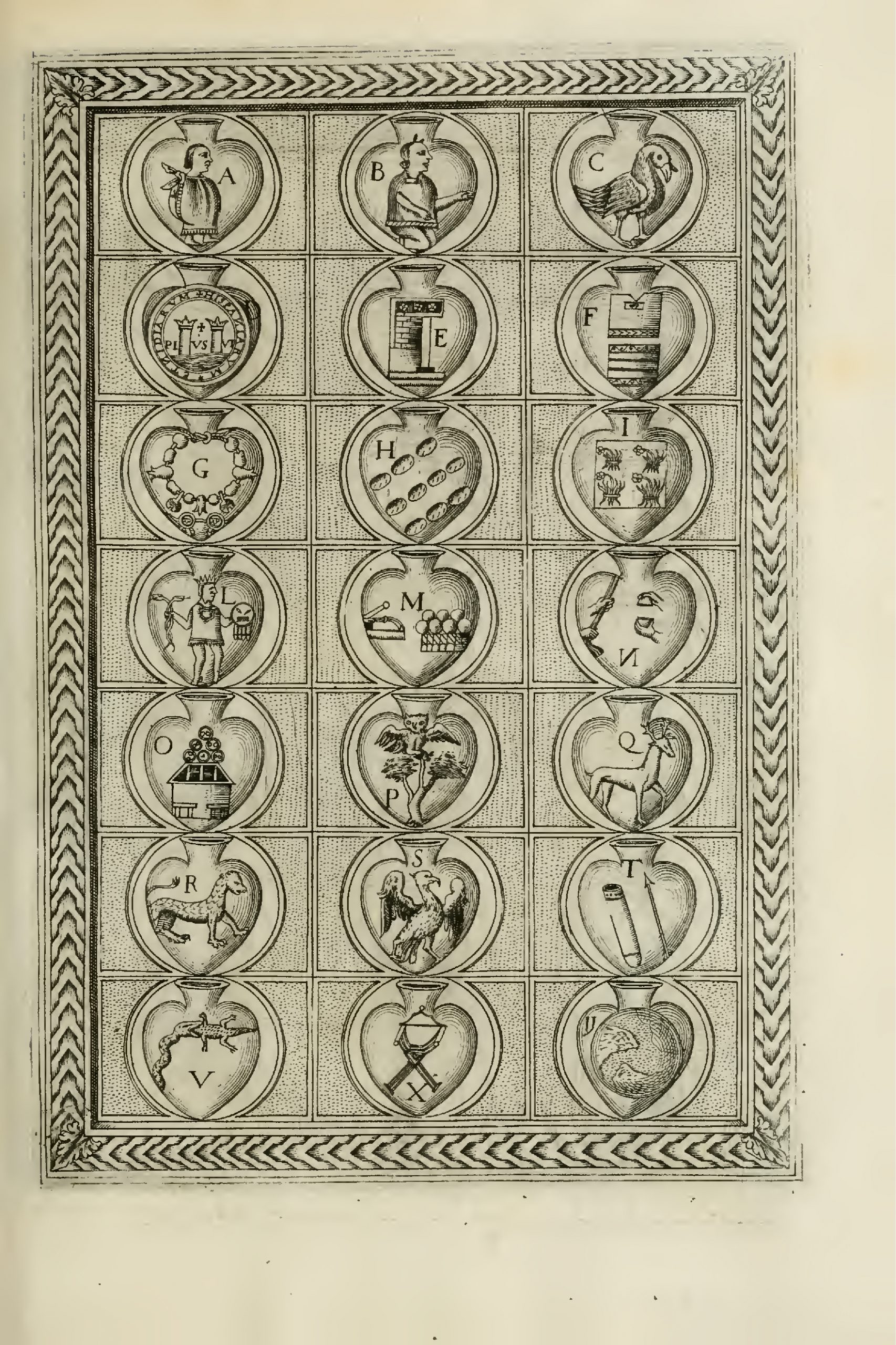The secret of Gutiérrez Naranjo’s mnemonic prowess lay in his ability to traverse the cities and palaces of memory he had learned in treatises of ars memoriae then circulating in Tenochtitlan or Mexico City. The first treatise on city-palaces of memory written by a Mexican was Diego de Valadés’ Rhetorica christiana, printed in Perugia in 1579. Valadés was the mestizo son of a Spanish conquistador and a Tlaxcalan noblewoman. He entered the Franciscan order in Mexico and then moved to Rome, where he became a powerful member of the curia and a friend of Pope Gregory XIII, to whom he dedicated his Rhetorica. Although Valadés lifted his mnemonics of cities and palaces of memory from Joannes Romberch’s Congestorius artificisiose memoriae (1533) without attributions, he creatively introduced readers to striking novelties, inserting Mexican symbols and landscapes.
Mnemonic alphabet in Nahuatl, Purépecha and Otomí
Mnemonic alphabet in Nahuatl, Purépecha and Otomí. Diego de Valadés, Rhetorica christiana (Perugia, 1579).
Jorge Cañizares-Esguerra
Further reading
- Carruthers, M. (1990) The Book of Memory (New York, NY: Cambridge University Press).
- de la Maza, F. (1945) Fray Diego Valadés: escritor y grabador franciscano del siglo XVI (Mexico City: UNAM Instituto de Investigaciones Estéticas).
- Palomera, E.J. (1988) Fray Diego Valadés, OFM, evangelizador humanista de la Nueva España: el hombre, su época y su obra (Mexico City: Universidad Iberoamericana).
- Spence, J.D. (1984) The Memory Palace of Matteo Ricci (New York, NY: Viking Penguin).
- Yates, F.A. (1966) The Art of Memory (Chicago, IL: University of Chicago Press).





